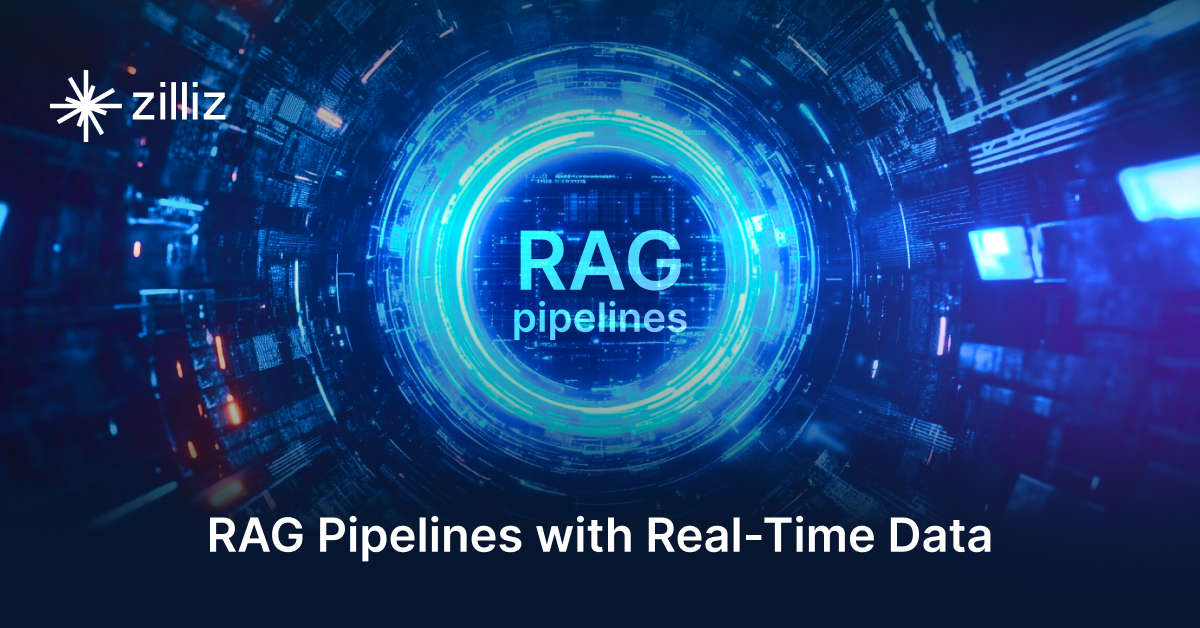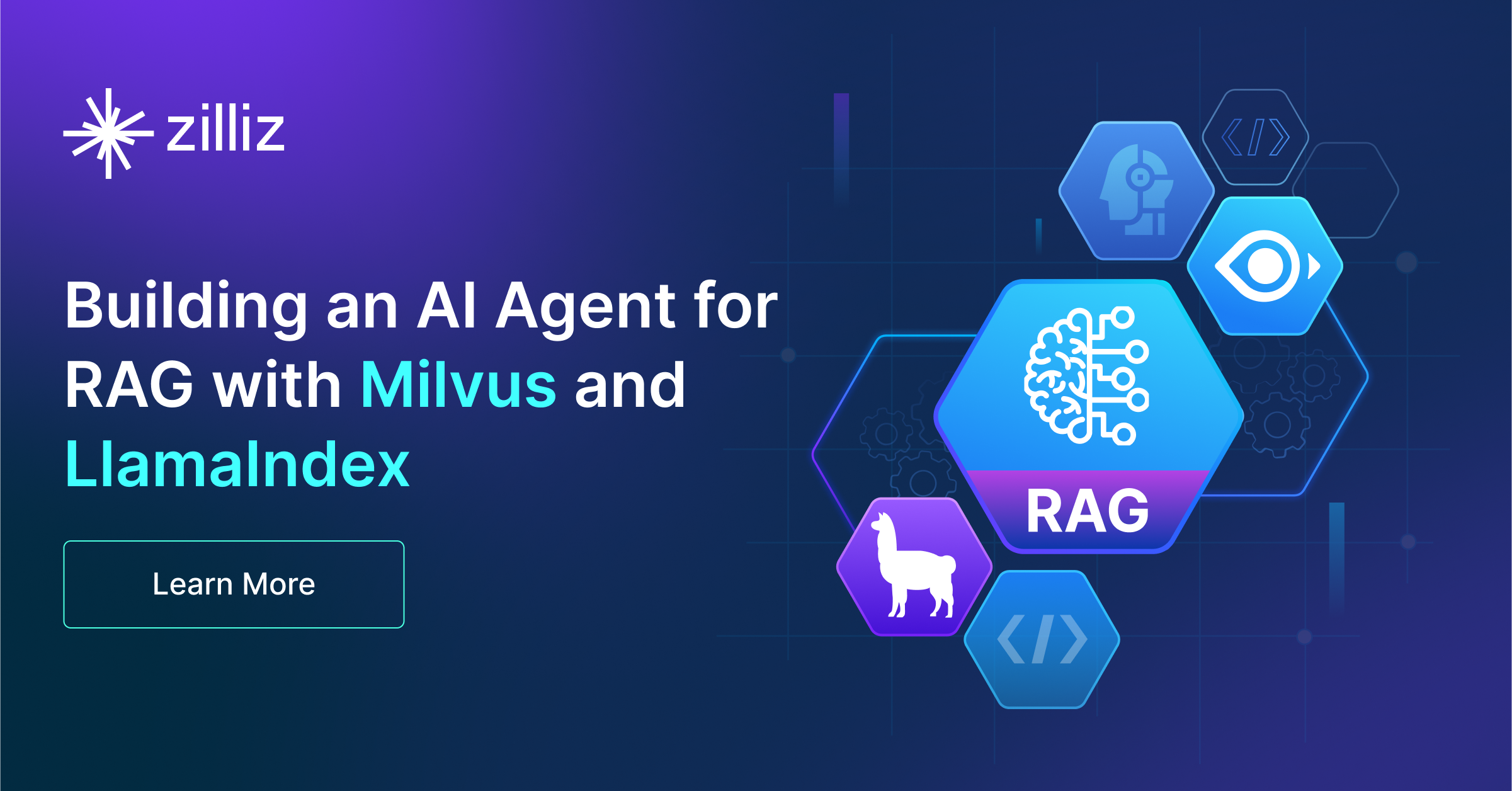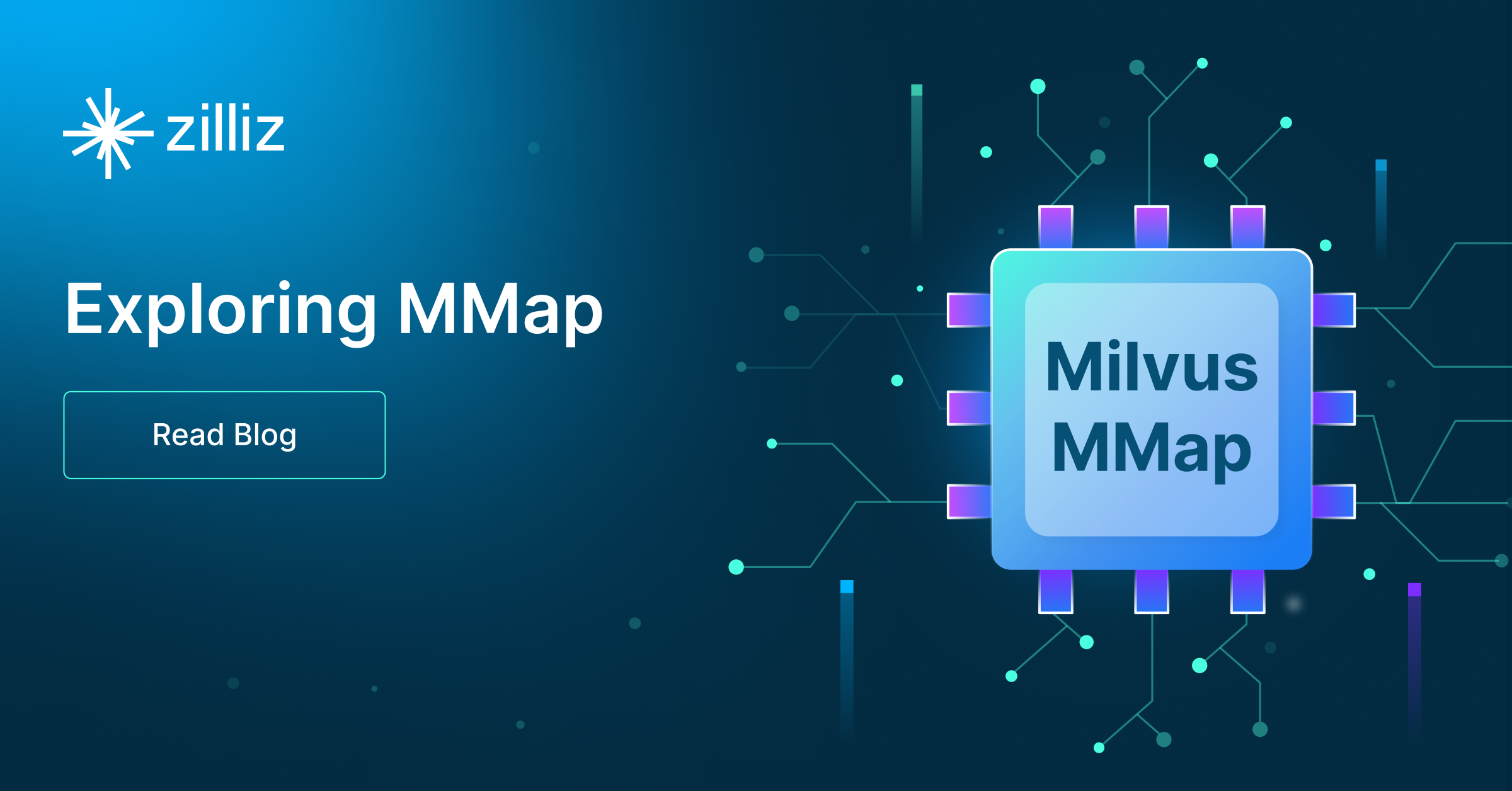Build RAG Chatbot with LangChain, Faiss, Google Vertex AI Gemini 1.5 Pro, and IBM all-minilm-l12-v2
Introduction to RAG
Retrieval-Augmented Generation (RAG) is a game-changer for GenAI applications, especially in conversational AI. It combines the power of pre-trained large language models (LLMs) like OpenAI’s GPT with external knowledge sources stored in vector databases such as Milvus and Zilliz Cloud, allowing for more accurate, contextually relevant, and up-to-date response generation. A RAG pipeline usually consists of four basic components: a vector database, an embedding model, an LLM, and a framework.
Key Components We'll Use for This RAG Chatbot
This tutorial shows you how to build a simple RAG chatbot in Python using the following components:
- LangChain: An open-source framework that helps you orchestrate the interaction between LLMs, vector stores, embedding models, etc, making it easier to integrate a RAG pipeline.
- Faiss: also known as Facebook AI Similarity Search, is an open-source vector search library that allows developers to quickly search for semantically similar multimedia data within a massive dataset of unstructured data. (If you want a much more scalable solution or hate to manage your own infrastructure, we recommend using Zilliz Cloud, which is a fully managed vector database service built on the open-source Milvus and offers a free tier supporting up to 1 million vectors.)
- Google Vertex AI Gemini 1.5 Pro: This advanced AI model combines powerful machine learning capabilities with enhanced multimodal support, enabling seamless processing of text, images, and audio. Its strengths lie in scalability and customization, making it ideal for enterprise applications such as content generation, data analysis, and customer interaction automation.
- IBM all-minilm-l12-v2: This model is a compact yet powerful transformer-based architecture optimized for natural language understanding and processing tasks. It excels in scenarios requiring efficient computation without sacrificing performance, making it ideal for applications in chatbots, information retrieval, and sentiment analysis. Its lightweight design enables integration in resource-constrained environments while maintaining competitive accuracy.
By the end of this tutorial, you’ll have a functional chatbot capable of answering questions based on a custom knowledge base.
Note: Since we may use proprietary models in our tutorials, make sure you have the required API key beforehand.
Step 1: Install and Set Up LangChain
%pip install --quiet --upgrade langchain-text-splitters langchain-community langgraph
Step 2: Install and Set Up Google Vertex AI Gemini 1.5 Pro
pip install -qU "langchain[google-vertexai]"
# Ensure your VertexAI credentials are configured
from langchain.chat_models import init_chat_model
llm = init_chat_model("gemini-1.5-pro", model_provider="google_vertexai")
Step 3: Install and Set Up IBM all-minilm-l12-v2
pip install -qU langchain-ibm
import getpass
import os
if not os.environ.get("WATSONX_APIKEY"):
os.environ["WATSONX_APIKEY"] = getpass.getpass("Enter API key for IBM watsonx: ")
from langchain_ibm import WatsonxEmbeddings
embeddings = WatsonxEmbeddings(
model_id="sentence-transformers/all-minilm-l12-v2",
url="https://us-south.ml.cloud.ibm.com",
project_id="<WATSONX PROJECT_ID>",
)
Step 4: Install and Set Up Faiss
pip install -qU langchain-community
from langchain_community.vectorstores import FAISS
vector_store = FAISS(embedding_function=embeddings)
Step 5: Build a RAG Chatbot
Now that you’ve set up all components, let’s start to build a simple chatbot. We’ll use the Milvus introduction doc as a private knowledge base. You can replace it with your own dataset to customize your RAG chatbot.
import bs4
from langchain import hub
from langchain_community.document_loaders import WebBaseLoader
from langchain_core.documents import Document
from langchain_text_splitters import RecursiveCharacterTextSplitter
from langgraph.graph import START, StateGraph
from typing_extensions import List, TypedDict
# Load and chunk contents of the blog
loader = WebBaseLoader(
web_paths=("https://milvus.io/docs/overview.md",),
bs_kwargs=dict(
parse_only=bs4.SoupStrainer(
class_=("doc-style doc-post-content")
)
),
)
docs = loader.load()
text_splitter = RecursiveCharacterTextSplitter(chunk_size=1000, chunk_overlap=200)
all_splits = text_splitter.split_documents(docs)
# Index chunks
_ = vector_store.add_documents(documents=all_splits)
# Define prompt for question-answering
prompt = hub.pull("rlm/rag-prompt")
# Define state for application
class State(TypedDict):
question: str
context: List[Document]
answer: str
# Define application steps
def retrieve(state: State):
retrieved_docs = vector_store.similarity_search(state["question"])
return {"context": retrieved_docs}
def generate(state: State):
docs_content = "\n\n".join(doc.page_content for doc in state["context"])
messages = prompt.invoke({"question": state["question"], "context": docs_content})
response = llm.invoke(messages)
return {"answer": response.content}
# Compile application and test
graph_builder = StateGraph(State).add_sequence([retrieve, generate])
graph_builder.add_edge(START, "retrieve")
graph = graph_builder.compile()
Test the Chatbot
Yeah! You've built your own chatbot. Let's ask the chatbot a question.
response = graph.invoke({"question": "What data types does Milvus support?"})
print(response["answer"])
Example Output
Milvus supports various data types including sparse vectors, binary vectors, JSON, and arrays. Additionally, it handles common numerical and character types, making it versatile for different data modeling needs. This allows users to manage unstructured or multi-modal data efficiently.
Optimization Tips
As you build your RAG system, optimization is key to ensuring peak performance and efficiency. While setting up the components is an essential first step, fine-tuning each one will help you create a solution that works even better and scales seamlessly. In this section, we’ll share some practical tips for optimizing all these components, giving you the edge to build smarter, faster, and more responsive RAG applications.
LangChain optimization tips
To optimize LangChain, focus on minimizing redundant operations in your workflow by structuring your chains and agents efficiently. Use caching to avoid repeated computations, speeding up your system, and experiment with modular design to ensure that components like models or databases can be easily swapped out. This will provide both flexibility and efficiency, allowing you to quickly scale your system without unnecessary delays or complications.
Faiss Optimization Tips
To enhance the performance of the Faiss library in a Retrieval-Augmented Generation (RAG) system, begin by selecting the appropriate index type based on your data volume and query speed requirements; for example, using an IVF (Inverted File) index can significantly speed up queries on large datasets by reducing the search space. Optimize your indexing process by using the nlist parameter to partition data into smaller clusters and set an appropriate number of probes (nprobe) during retrieval to balance between speed and accuracy. Ensure the vectors are properly normalized and consider using 16-bit or 8-bit quantization during indexing to reduce memory footprints for large datasets while maintaining reasonable retrieval accuracy. Additionally, consider leveraging GPU acceleration if available, as Faiss highly benefits from parallel processing, leading to faster nearest neighbor searches. Continuous fine-tuning and benchmarking with varying parameters and configurations can guide you in finding the most efficient setup specific to your data characteristics and retrieval requirements.
Google Vertex AI Gemini 1.5 Pro optimization tips
Gemini 1.5 Pro is a robust model designed for complex RAG applications requiring deep reasoning. Optimize retrieval by implementing advanced ranking algorithms to ensure highly relevant documents are included. Structure prompts with clear logical sections to maximize response coherence. Keep temperature between 0.1 and 0.3 for factual precision, fine-tuning top-k/top-p as needed. Use Google’s AI infrastructure to batch API calls, reducing processing overhead. Implement caching strategies to optimize frequently queried topics. Streaming responses can enhance real-time applications, improving perceived responsiveness. If deploying multiple models, reserve Gemini 1.5 Pro for high-value analytical tasks while using lighter models for simpler retrieval-based queries.
IBM all-minilm-l12-v2 optimization tips
To optimize the IBM all-minilm-l12-v2 model in a Retrieval-Augmented Generation (RAG) setup, consider fine-tuning it on domain-specific datasets to enhance relevance and accuracy for your particular use case. Implement model distillation techniques to reduce inference time while maintaining performance. Additionally, ensure efficient batch processing by adjusting the maximum sequence length based on your input data, and utilize mixed precision training to improve computational efficiency. Regularly evaluate the model's performance with various retrieval methods to identify the best combination and consider employing caching strategies for frequently accessed data to minimize latency. Finally, experiment with different hyperparameters, like learning rate and dropout rates, during fine-tuning to achieve optimal results.
By implementing these tips across your components, you'll be able to enhance the performance and functionality of your RAG system, ensuring it’s optimized for both speed and accuracy. Keep testing, iterating, and refining your setup to stay ahead in the ever-evolving world of AI development.
RAG Cost Calculator: A Free Tool to Calculate Your Cost in Seconds
Estimating the cost of a Retrieval-Augmented Generation (RAG) pipeline involves analyzing expenses across vector storage, compute resources, and API usage. Key cost drivers include vector database queries, embedding generation, and LLM inference.
RAG Cost Calculator is a free tool that quickly estimates the cost of building a RAG pipeline, including chunking, embedding, vector storage/search, and LLM generation. It also helps you identify cost-saving opportunities and achieve up to 10x cost reduction on vector databases with the serverless option.
 Calculate your RAG cost
Calculate your RAG cost
What Have You Learned?
Wow, you’ve just unlocked the power of building a RAG system from scratch! By diving into this tutorial, you’ve learned how to seamlessly weave together four critical components: LangChain as your orchestration framework, FAISS as your lightning-fast vector database, Google Vertex AI Gemini 1.5 Pro as your reasoning powerhouse, and IBM’s all-minilm-l12-v2 as your efficient embedding model. LangChain acted as the glue, simplifying the flow of data between steps—from ingesting documents to querying them. FAISS supercharged your system by enabling rapid similarity searches across dense vector embeddings, ensuring your RAG pipeline delivers answers in real time. Meanwhile, IBM’s compact embedding model transformed text into meaningful numerical representations, balancing speed and accuracy. And Gemini 1.5 Pro? It brought the magic, synthesizing retrieved context into coherent, human-like responses that feel both relevant and insightful. You’ve seen firsthand how these pieces collaborate to turn raw data into actionable knowledge!
But wait—there’s more! You also picked up pro tips for optimizing your system, like tweaking chunk sizes for better retrieval or adjusting temperature settings to control Gemini’s creativity. The free RAG cost calculator introduced here is your secret weapon for budgeting deployments without surprises. Now, imagine what you can build next: customer support bots, research assistants, or even personalized learning tools. The tools are in your hands, and the possibilities are endless. So, what are you waiting for? Tinker with the code, experiment with different models, and push the boundaries of what RAG can do. Your journey into AI-powered applications has just begun—go out there and create something amazing! 🚀
Further Resources
🌟 In addition to this RAG tutorial, unleash your full potential with these incredible resources to level up your RAG skills.
- How to Build a Multimodal RAG | Documentation
- How to Enhance the Performance of Your RAG Pipeline
- Graph RAG with Milvus | Documentation
- How to Evaluate RAG Applications - Zilliz Learn
- Generative AI Resource Hub | Zilliz
We'd Love to Hear What You Think!
We’d love to hear your thoughts! 🌟 Leave your questions or comments below or join our vibrant Milvus Discord community to share your experiences, ask questions, or connect with thousands of AI enthusiasts. Your journey matters to us!
If you like this tutorial, show your support by giving our Milvus GitHub repo a star ⭐—it means the world to us and inspires us to keep creating! 💖
- Introduction to RAG
- Key Components We'll Use for This RAG Chatbot
- Step 1: Install and Set Up LangChain
- Step 2: Install and Set Up Google Vertex AI Gemini 1.5 Pro
- Step 3: Install and Set Up IBM all-minilm-l12-v2
- Step 4: Install and Set Up Faiss
- Step 5: Build a RAG Chatbot
- Optimization Tips
- RAG Cost Calculator: A Free Tool to Calculate Your Cost in Seconds
- What Have You Learned?
- Further Resources
- We'd Love to Hear What You Think!
Content
Vector Database at Scale
Zilliz Cloud is a fully-managed vector database built for scale, perfect for your RAG apps.
Try Zilliz Cloud for Free


